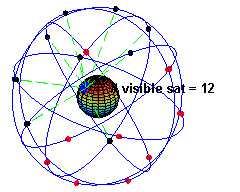In late 2009 the IAGNBI members celebrate a meeting in Palmyra, Syria, in order to explain the activities and results for every population of NBI and also to go forward in the conservation of the species.
One very special result of this meeting was the announcement of the initiative of transfering two ibis from the Bireçik colony to join the Syrian group.
Amina (female) and Ishtar (male) were 2010 youngsters from Bireçik, Turkey which were released in Syria after a brief settling period. This is the first time such a release had been tried and they successfully migrated to Southern Saudi Arabia guided by Salama and accompaigned by Ameer.
Ameer hatched in the wild in 2010 in Syria and is the offspring of Odeinat and untagged Zenobia - who sadly died after being found in a very weak condition two weeks after leaving Syria in southern Saudi Arabia.
After the hardest part of the migration flying through Arabian desert, the three young birds stopped transmitting and it appears they didn't survive. Anyway, the result of this experience was extremely positive because it was the first time to prove that young birds could migrate with a stranger to the South and opens a new area of conservation biology on NBI.













